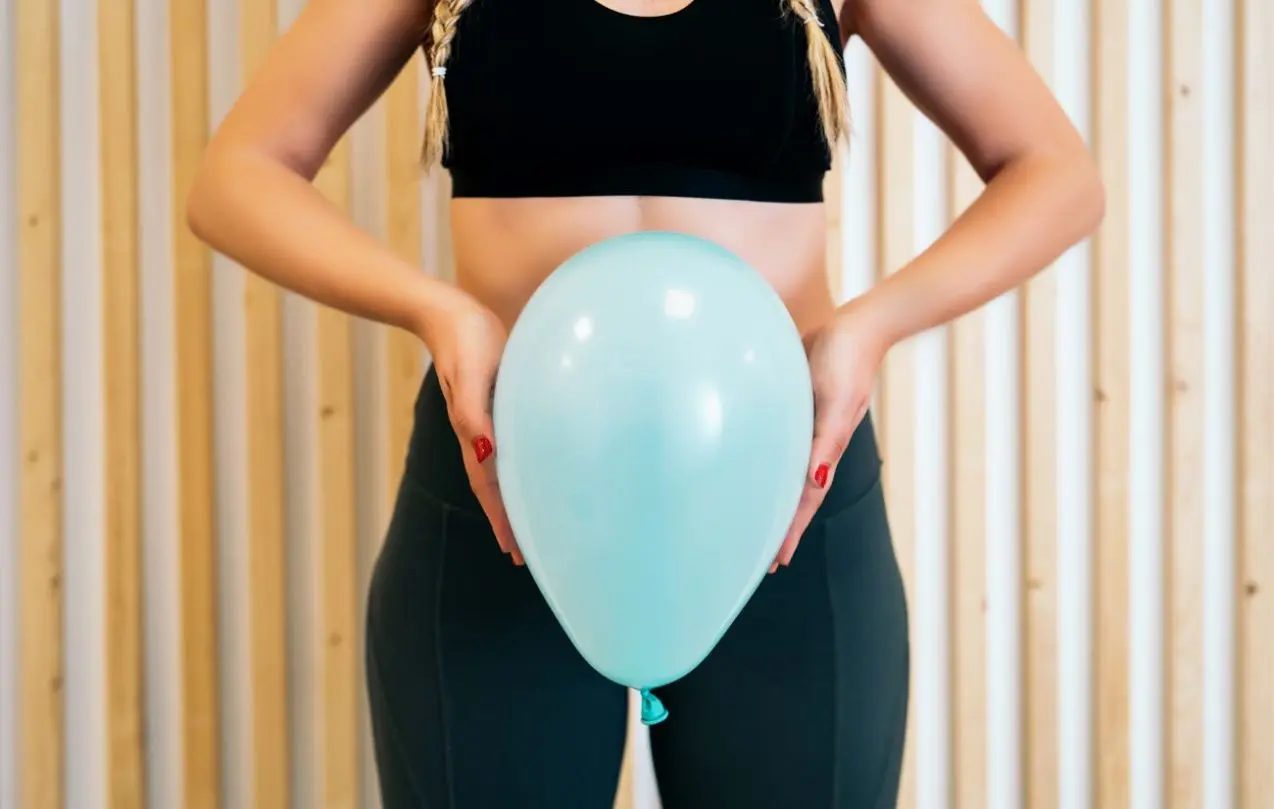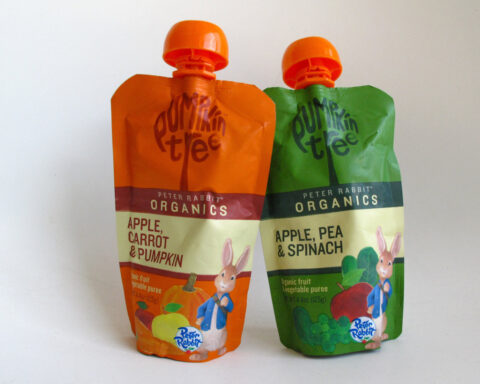Forget crunches. The Internet's new abs obsession is stomach vacuums - an old school exercise unexpectedly gone viral overnight. As you scroll social media, you'll see countless videos of people intensely sucking in their stomachs. The breath-controlled move promises a "snatched waist" and chiseled core. But is vacuuming in your gut the real secret to a six-pack? Or just another fitness fad of the moment?
Fitness pros explain what stomach vacuums actually do, whether they live up to the tight tummy hype, and how to do them right. While abs likely won't transform instantly from vacuuming alone, experts say the technique offers surprising benefits beyond a slimmer waistline. From improved posture and core strength to reduced back pain and breathing control, vacuums influence the body and mind in unexpected ways. Read on to learn why this decades-old exercise is suddenly blowing up online and if it deserves a spot in your next workout.
So, what exactly is this move garnering millions of views online? Fitness professionals explain that the stomach vacuum specifically targets the transverse abdominal, the deepest abdominal muscle that wraps around the torso. You engage this core-supporting layer by pulling your belly button towards your spine.
"It's almost like tightening a natural corset inside your body," said Sarah Wilson, Pilates instructor at ABC Fitness Studio in San Francisco. "You're narrowing the waist by activating those deep internal muscles."
Wilson emphasizes stomach vacuums are no shortcut to a 6-pack. They focus on foundational strength over quick aesthetic results. Still, people love exercise for both the physical and cosmetic outcomes it brings.
Jason Wu, a personal trainer in Los Angeles, reminds us that all abdominal moves require patience and consistency before visible changes appear. But he says vacuums uniquely access the hardest-to-work transverse abs.
"These muscles hold your core together and stabilize your spine," Wu said. "You can't get to them through regular crunches or sit-ups; you really have to focus on the sucking in motion."
So, what does the ab vacuum technique actually entail? Here's a step-by-step:
Stand with feet hip-width apart, relaxing your stomach. Inhale deeply through your nose. As you exhale out your mouth, engage your core drawing your belly button towards your spine. Imagine wearing a tight waist trainer inside your torso, narrowing as you breathe out.
Hold this sucked-in position for 10-15 seconds while continuing to breathe. Then, slowly release back to a relaxed posture. Repeat for a series of 4-5 rounds.
Beginners should start lying on their backs. This supine position allows you to better monitor breathing and core engagement without fighting gravity. Once mastered, progress the vacuum, holding onto your hands and knees, kneeling, and eventually standing for a greater challenge.
"Imagine a corset tightening each time you exhale out," explained Olivia Thompson, Los Angeles Pilates instructor. "Focus on keeping that deep engagement rather than aggressively sucking in."
Don't hold your breath even when holding the vacuum. Sync steady inhales and exhales with each rep. Never strain or compromise regular breathing patterns while performing this exercise.
While stomach vacuums entered the online zeitgeist only recently, fitness gurus have referenced their wide-ranging perks for years.
"Yogis have practiced breath-controlled vacuums for decades to build internal heat and lift energy up the spine," Wu said. "The pilates community incorporated it years back as a way to strengthen core foundational muscles."
Wu references the "core foundational muscles", which include the transverse abdominis, pelvic floor muscles, and diaphragm. Engaging these together creates stability and internal pressure, which is key to building core strength. Strengthening these muscles increases endurance, stamina, and control when exercising or carrying heavy objects.
John Smith, head trainer at a local LA gym, explains that the transverse abdominis acts like a muscular girdle encircling the waist. When contracted properly, they cinch the abdomen inwards. When released, your stomach relaxes back to neutral. This provides adjustable support that protects the back when reaching, bending, or rotating.
"Think of them like natural back braces that you can turn on and off but live inside your torso," Smith said. "Activating them routinely maintains that stability so your back stays protected during movement."
Chiropractor Johnson Jefferson, based in Sacramento, calls weak transverse abs one prevalent culprit causing back injury and pain. He believes most Americans unknowingly suffer from dormant cores after years of improperly hunching over computers and steering wheels.
Stomach vacuums essentially "wake up" and strengthen these sleepy muscles with concentrated activation. By performing them routinely, you will develop increased mindfulness of properly using your core to prevent injury.
So, beyond back support and a cosmetically cinched waist, what other vacuum perks exist?
Improved posture tops many health professionals' benefits list. Actively utilizing your transverse abdominis encourages upright spinal alignment with shoulders down and back. This reduces neck, shoulder, and spinal discomfort associated with slouching and sliding out of ideal postures over time.
Doctors also praise stomach vacuums for training proper full-breath technique. The controlled exhales and steady inhales teach core-lung coordination, which is used in yoga, meditation, and pilates. Building such breath-body awareness taps into the relaxation response, reducing everyday anxiety exponentially.
"The more mind-body connection fostered through that breathwork, the better," said Thompson, who leads pilates fusion classes. "I see vacuums relieving stress as much as they strengthen abs."
While this exercise suits all ages, health professionals advise caution to anyone with lower back injuries or current mobility issues. Anyone attempting stomach vacuums should stop immediately if they feel strain in their spine or discomfort beyond normal muscle tension. Those with pre-existing back problems should consult a doctor before attempting vacuums.
Thompson reminds us that all core work challenges your balance initially as you build those stabilizer muscles. Take it slow by holding onto support if needed at first. Don't expect to nail perfect posture right away, either. Proper form and body control evolves with gentle, patient practice over time.
"Be patient as your body integrates these internal movements," Thompson said. "Ideal alignment gets easier with regular vacuum work. Just keep breathing, keep trying."
Want to try stomach vacuums yourself? Local pilates or yoga studios teach safe form if you're new to the exercise. Once the technique clicks, do mini-vacuums throughout your day for compound benefits. Simply activate your core before picking up heavy items or reaching for objects overhead.
"The more you consciously engage those muscles, the more default support for your back," said Smith, who sets smartwatch alerts telling him to do a vacuum hourly. "It becomes a built-in posture reminder."
While stomach vacuum internet virality will likely fade as fitness fads do, experts predict the move will stick around thanks to proven outcomes. No fancy equipment or expensive gear is needed. Just steady breath, a focused core, and a few minutes of your time to continually build that internal corset.
Yoga teacher Sarah Davis explains that stomach vacuums' staying power comes from the mind-body connection they foster. Beyond physical outcomes, people love how vacuums increase mindfulness of internal core control.
"It teaches you muscle awareness using breath cues rather than watching yourself externally in a mirror," Davis said. That feeling of sticking a vacuum hold builds mental strength, too."
Davis recommends that beginners start vertical vacuum training by holding a wall for balance assistance. This prevents over-arching the lower back as you hone the sucking motion.
For long-timers, she suggests bringing vacuums into everyday activities. Engage your core before lifting objects, twisting to change directions or sit-to-stand transfers.
"The more you consciously activate transverse abdominals in functional moves, the more core support translates unconsciously when you bend, twist, walk - everything."
Smith agrees vacuums work uniquely with other exercises to build full core strength. He designs custom training programs using stomach vacuum holds between sets of planks, bicycles, and other oblique moves.
"Vacuums wake up those deep muscles first so they fully engage when you progress into more dynamic motions," Smith explained. "It's a primer before you ask your core to work hard during compound lifts or HIIT-style training."
For many clients, Smith also leverages the mental power of visualization during the sucking motion. He encourages people to picture an internal corset or belt tightening around their waist when they vacuum in.
"That mental image of actually putting on armor around your core makes you engage more," Smith said. It's like tricking your mind into firing muscles fully."
That mind-muscle connection keeps Kelly Mathews committed to daily vacuums, too. After two pregnancies severely weakened her abdominal muscles, traditional crunches, and planks sent sharp pains across her back. Doctors diagnosed a diastasis recti-separation in the outer abs down the midline.
Mathews turned to pilates rebuilding, focusing on transverse engagement to protect her spine. She credits vacuums as foundational for healing the rift in her abs without further hurting her back.
Now six months postpartum, Mathews notices her waistline firming and midsection flattening thanks to diligent vacuum work. But the mental clarity that breathwork brings fuels her motivation most.
"I'm rebuilding core strength as much for my mind as my body after having babies," Mathews said. "That feeling of everything centering inward when I nail a vacuum hold brings this instant sense of calm."
Matthews reminds us that any abdominal or core exercise requires consistency before visible changes appear externally. But with vacuums, that mental benefit boosts much faster.
"My stomach doesn't look dramatically smaller yet, but I feel my insides grow stronger," Mathews said. "I stand taller and breathe better knowing I'm supporting myself from the inside out."
Want to learn more? Reach out to a local pilates or yoga studio. Those communities recognized vacuums' unique perks long before TikTok brought the technique into the mainstream.

 Trump has begun another trade war. Here's a timeline of how we got here
Trump has begun another trade war. Here's a timeline of how we got here
 Canada's leader laments lost friendship with US in town that sheltered stranded Americans after 9/11
Canada's leader laments lost friendship with US in town that sheltered stranded Americans after 9/11
 Chinese EV giant BYD's fourth-quarter profit leaps 73%
Chinese EV giant BYD's fourth-quarter profit leaps 73%
 You're an American in another land? Prepare to talk about the why and how of Trump 2.0
You're an American in another land? Prepare to talk about the why and how of Trump 2.0
 Chalk talk: Star power, top teams and No. 5 seeds headline the women's March Madness Sweet 16
Chalk talk: Star power, top teams and No. 5 seeds headline the women's March Madness Sweet 16
 Purdue returns to Sweet 16 with 76-62 win over McNeese in March Madness
Purdue returns to Sweet 16 with 76-62 win over McNeese in March Madness








